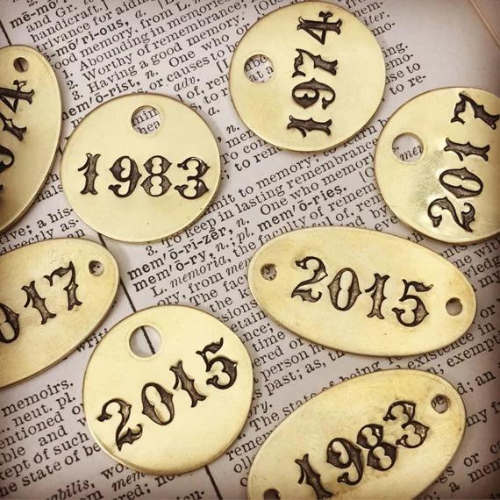Brass Tags Manufacturer in China
Brass is a durable and long-lasting material for making tags. Brass tags often serve as a means of conveying information, data, and branding for various businesses and can be filled with black, blue, red, or white colors.
To meet your specific requirements, we offer customized services, including different thicknesses, shapes, sizes, finishes, dimensions, corners, and holes. Additionally, we can customize images and text, logos, barcodes, and QR codes on the tags using techniques such as engraving, stamping, etching, or embossing.
Why Do People Like to Choose Brass Tags?
Brass tags have benefits including durability, corrosion resistance, aesthetic appeal, ease of engraving, customization options, high temperature tolerance, low maintenance, and readability. They are versatile and find applications in various industries, combining a classic look with practical functionality.


Applications of Brass Tags
Brass tags find diverse applications due to their durability and aesthetic appeal. Common uses include equipment labeling, asset tracking, key identification, pet tags, nameplates, cable marking, plaques, outdoor signage, military applications, and DIY projects. They offer a durable and corrosion-resistant solution for identification and labeling needs across various industries.
Manufacturing Process of Brass Tags


The manufacturing process of brass tags involves material preparation, cutting, stamping or engraving, hole punching (if needed), bending or forming (if needed), finishing (including polishing and protective coatings), quality control, and packaging. Precision and attention to detail are crucial for producing high-quality brass tags.
Stamping brass tags involves using a method to imprint or engrave information onto the surface of the brass. Here’s a basic guide on how to stamp brass tags using a manual stamping or engraving process:
Materials and Tools Needed:
- Brass Tags: Ensure the tags are made of a suitable thickness for stamping.
- Stamps or Engraving Tools: Metal stamps or engraving tools with the desired characters or designs.
- Work Surface: A sturdy and flat work surface to provide stability.
- Masking Tape: To secure the brass tag in place.
- Hammer or Mallet: For striking the stamps or engraving tools.
- Metal File or Sandpaper: To smooth edges or refine the finish if necessary.
Steps:
- Prepare the Work Area:
– Choose a flat and stable work surface.
– Place a layer of masking tape on the work surface to help secure the brass tag in place and protect it from scratches.
- Secure the Brass Tag:
– Place the brass tag on the work surface and secure it in place using masking tape to prevent movement during stamping.
- Layout and Alignment:
– Plan the layout of the information you want to stamp on the brass tag.
– Use a straight edge or ruler to ensure proper alignment of characters or designs.
- Select and Align Stamps:
– Choose the appropriate metal stamps for the characters or designs you want to imprint.
– Align the stamps on the brass tag according to your planned layout.
- Stamping:
– Hold the selected stamp firmly in position on the brass tag.
– Use a hammer or mallet to strike the top of the stamp with a firm, even force.
– Repeat the process for each character or design, ensuring consistent depth and spacing.
- Inspect and Refine:
– After stamping, inspect the brass tag to ensure the characters are clear and properly aligned.
– If necessary, use a metal file or sandpaper to smooth the edges or refine the finish.
- Cleaning:
– Clean the stamped brass tag to remove any residue or debris from the stamping process.
- Optional Finishing:
– Depending on your preferences, you may choose to leave the brass tag with the stamped design or explore additional finishing options, such as polishing or applying a protective coating.



